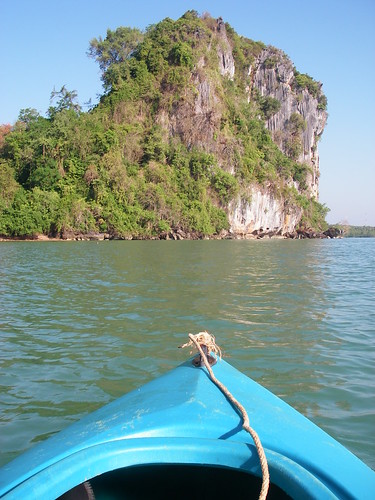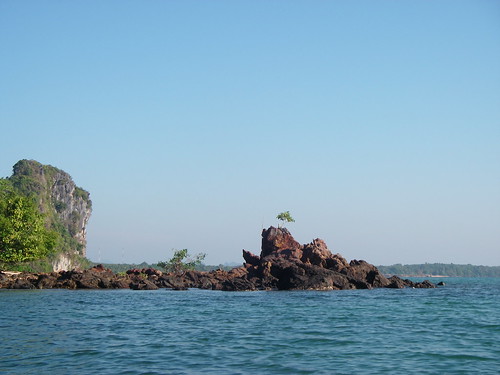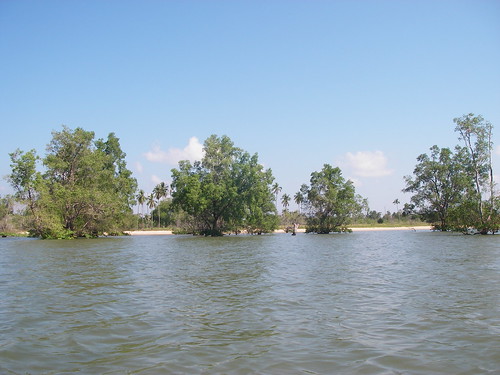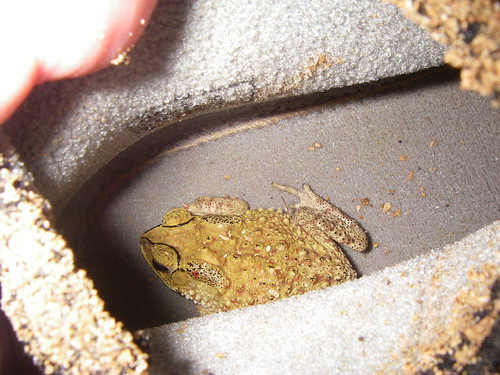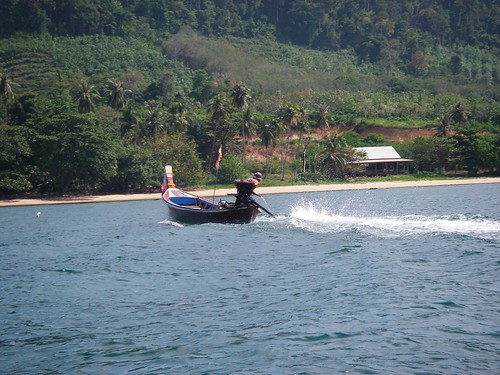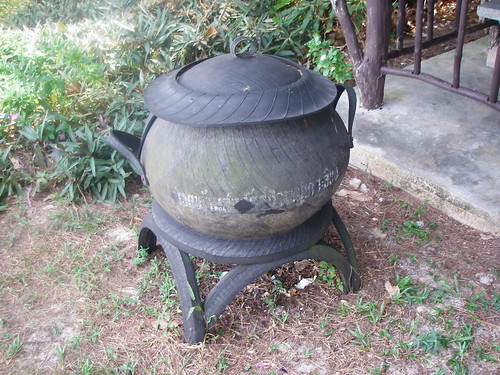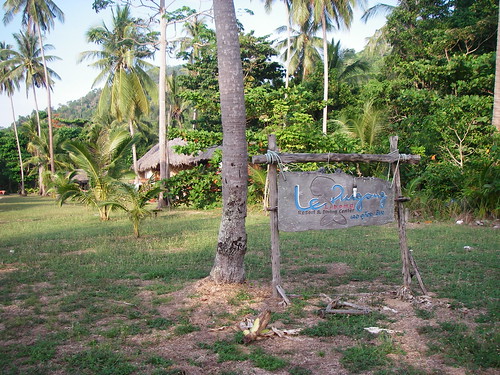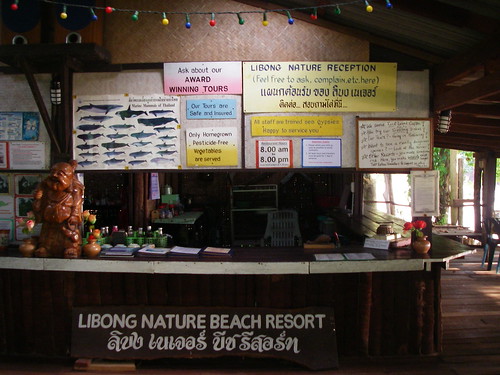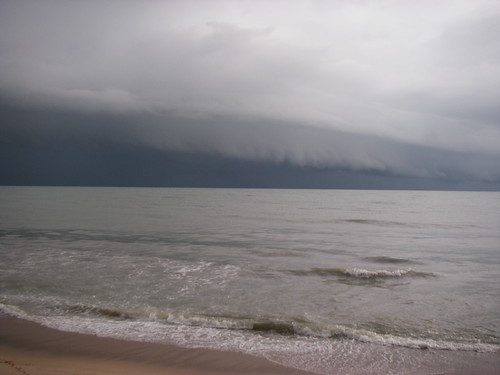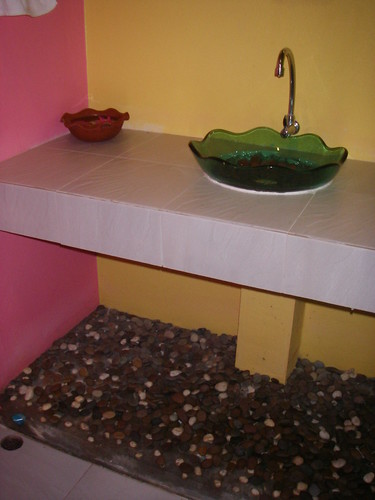Girl’s Own Adventure: Kayak Survey
Tuesday, January 12th, 2010On the map at reception, the the dugong habitat looked to be around the corner from the Libong Nature Beach Resort, clearly marked in the bay off Na Barn village. I paddled into the calm morning with optimism, but when I reached the outcrop of rocks that marked the end of the resort’s beach, it turned out that this was not the island’s southern tip—far from it. The outcrop opened up into another secluded bay and, after that, another.
I remembered the three ‘secret’ beaches that could be explored by kayak or mountain bike as detailed on the wall posters next to the reception. The map was a much smaller scale, making the distance to Na Barn village and the bay of the dugongs appear closer. I had still some way to paddle, but it didn’t matter. It was still cool—I’d climbed into the boat just after 7:30—and the sea was mirror-calm.
I watched out for movements on the surface, but the spectacular coastline kept drawing my gaze.
It took over an hour’s paddling before I finally reached the eastern side of the island. Almost immediately, I spotted the first seagrass bed. Heart pounding I slowed down but the water was too turbid to make out any feeding tracks. Had I thought of measuring the depth, I would have found that it was probably too shallow for dugongs. One of the figures in the survey report1 shows the depth around large parts of Libong to be 70cm or less.
The sea had freshened up to a State Two, the bay rippling with gentle wavelets, although there was no noticeable breeze. At 9:21 I saw a dolphin-sized splash somewhere in the middle of the bay, and eight minutes later another. Were there dolphins here, so close to shore? Do dugongs jump? Seals do sometimes, so why not dugongs?
Another hour’s paddling followed. By now the sun had climbed high into the sky and the village of Na Barn lay a long way behind me. Cursing, I had circled its ridiculously long pier—stretching at least half a mile into the bay—and crossed from there diagonally back to shore to find that I had already passed most of the village, including anything that might have been a shop or noodle house. There was no seagrass there, just shallow mud, and I felt cheated.
I took a sip from my water bottle and chewed on a stick of fruit leather, turning away from the sun to find myself looking at a stretch of golden sand behind the mangroves.
